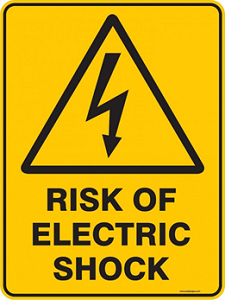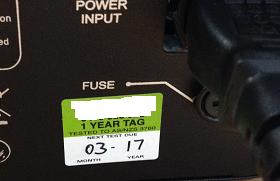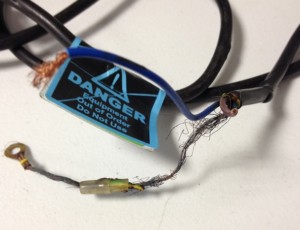Electrical risks
Electricity has the potential to seriously injure and kill.
Electrical hazards exist in contact with exposed live parts, faults which could cause fire or explosions where an electrical fault is the source of ignition.
Sectors of the jurisdiction who perform electrical work on or near energised electrical equipment, including electrical installation, use and maintenance of electrical equipment need to be alert to the risks associated with that work.
Comcare’s electrical safety campaign ‘Stay Safe in the Workplace’ concluded on 30 September 2014. Materials and tools are available for your workplace help manage electrical hazards.
Risk
Electrocution incidents can be fatal, while non-fatal shocks can result in serious and permanent burn injuries to skin, internal tissues and damage to the heart depending on the length and severity of the shock.
Electric shocks from faulty electrical equipment may also lead to related injuries, including falls from ladders, scaffolding or other elevated work platforms. Other injuries or illnesses may include muscle spasms, palpitations, nausea, vomiting, collapse and unconsciousness.
Those working with electricity may not be the only ones at risk. Poor electrical installation and faulty electrical appliances can lead to electric shock to others at or near the workplace.
Although we speak mainly of dynamic electricity (i.e. an electric current), static electricity, the accumulation of charge on a surface as a result of two surfaces rubbing together can also cause a static electric shock which can be painful but normally non-life threatening. The trouble with static electricity is if there is flammable or combustible liquids or gases that (depending on their flash point) ignite causing explosion or fire.
Remedy
Dependant on the context and conditions, but may include for example:
- Ensure only appropriately licensed or registered electricians carry out electrical work
- Switch off electricity where possible before working on equipment
- Ensure electrical equipment is in good working order (testing and tagging)
- Use battery operated tools rather than mains power tools where possible
- Remove damaged, unsafe electrical equipment or cords from the workplace
- Ensure tag out and isolation procedures are in place and used
- Use residual current devices (or safety switches) with portable equipment (as per the WHS Regulations)
- Don’t overload power sockets. Use power boards not double adaptors
- Meet electrical safety standards
Originally published as Electrical Risks



